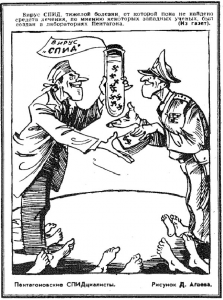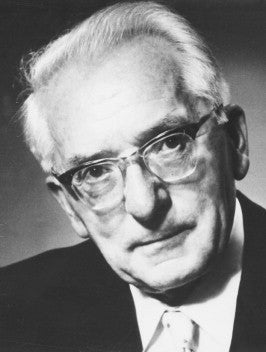
Of all the many disinformation campaigns inaugurated during the Cold War, most but not all by the USSR, arguably the most infamous was the effort by the KGB and its allies to convince the world that AIDS was created in an alleged secret US biowarfare lab at Ft. Detrick, MD. The campaign incorporated the efforts of the KGB’s Service A, responsible for active measures efforts, along with their counterparts in the East German Stasi, and other Warsaw Pact secret services. Dubbed Operation Denver by the East Germans, the campaign began in 1983 and intensified in 1985, before being wound down in late 1987.
Despite being refuted by all credible medical experts, the AIDS as bioweapon theory has lingered on, serving as a sort of gateway drug to other conspiracy theories, and paving the way for later falsehoods regarding diseases such as Ebola virus and COVID-19.
Origins of the Campaign
Claims that various disease outbreaks were the result of American machinations were nothing new for the Communist Bloc. During the Korean War, China and North Korea mounted two extensive propaganda campaigns alleging that the US was employing biological warfare (BW). Even after the United States officially dismantled its BW program in the 1970s, such efforts at “active measures” continued. In 1981, Cuba claimed that an outbreak of Dengue Fever was caused by the CIA. The next year, the KGB-controlled Soviet journal Literaturnaya Gazeta published an “expose” arguing that a University of Maryland-operated bioresearch facility in Lahore, Pakistan was really a BW lab producing disease-bearing mosquitos for deliberate release. Unfounded as they were, the allegations created a furor that forced the lab director to leave the country.
With the horrific emergence of AIDS in the early 1980s, it was inevitable that the KGB would seek to incorporate this epidemic into their pantheon of medical disinformation theories. The first attempt came on July 16, 1983, when a Soviet-funded Indian newspaper named The Patriot published a letter allegedly written by an anonymous American scientist. The letter, in the words of scholar Thomas Rid, “was a masterfully executed disinformation operation: comprising about 20 percent forgery and 80 percent fact, truth and lies woven together, it was an eloquent, well-researched piece.” (Rid, Active Measures, 303)
The “letter” warned that AIDS was created as a result of Pentagon BW experiments centered around the research facility at Ft. Detrick, and tied into the Lahore lab allegations by claiming that this research would soon be transferred to Pakistan. The goal of the piece was to use fear of AIDS to mobilize anti-American sentiment in India. However, the article did not produce the desired reaction, and it would be two years before another attempt would be made to build an active measures campaign involving AIDS.
“Operation Denver:” 1985-7

By the summer of 1985, the KGB had decided to launch a major disinformation campaign in support of the AIDS/Ft. Detrick falsehood. In a September 7, 1985 message to the Bulgarian intelligence service, the KGB stated that:
We are conducting a series of [active] measures in connection with the appearance in recent years in the USA of a new and dangerous disease, “Acquired Immune Deficiency Syndrome – AIDS”…, and its subsequent, large-scale spread to other countries, including those in Western Europe. The goal of these measures is to create a favorable opinion for us abroad that this disease is the result of secret experiments with a new type of biological weapon by the secret services of the USA and the Pentagon that spun out of control. (quoted in Selvage and Nehring, Operation “Denver”)
The effort went public on October 30, 1985, with an article in Literaturnaya Gazeta titled “Panic in the West.” This piece repeated the main themes of the Ft. Detrick allegation, and cited the July 1983 Patriot article in support of its argument. As the campaign evolved, the KGB and its east European allies made much of the thesis that the origins of AIDS lay on the African continent. This aroused a great deal of resentment among many Africans, who felt that the West was blaming them for the rapidly growing pandemic. Exploiting these sentiments by offering an alternative explanation of the origin of AIDS became a major focus of the KGB’s efforts.
At the same time, East German intelligence, known as the Stasi, assumed an increasingly important role in the AIDS active measures push. In July 1986, Department X (ten) of the Stasi’s foreign intelligence branch, responsible for disinformation efforts, officially adopted the code name “Operation Denver” for the AIDS campaign. On September 3, 1986, Department X updated the Bulgarians on their efforts:
With the goal of exposing the dangers to mankind arising from the research, production, and use of biological weapons, and also in order to strengthen anti-American sentiments in the world and to spark domestic political controversies in the USA, the GDR side will present you with a scientific study and other materials that prove that AIDS originated in the USA, not in Africa, and that AIDS is a product of the USA’s bioweapons research. (Quoted in Selvage, ‘Operation “Denver”,’ 103)
A major development came in August 1986, when the Non-Aligned Movement met in Harare, Zimbabwe. Attendees and journalists were flooded with copies of a brochure titled “AIDS: USA Home-Made Evil, NOT out of AFRICA.” Written by a pair of communist scientists living in East Germany, Jakob and Lilli Segal, the brochure argued that AIDS was a product of Ft. Detrick. The pamphlet gained great notoriety, and the Segals were soon embraced by those supporting the Ft. Detrick conspiracy theory.
Another key moment for Operation Denver came on October 29, 1986, when a British tabloid, the Sunday Express, became the first major western news outlet to run a story based on Jakob Segal’s claims. The Detrick conspiracy theory continued to spread in the first part of 1987. According to Thomas Rid, over 40 articles worldwide concerning the allegations appeared between January-March 1987. (Rid, Active Measures, 309) Perhaps the peak moment of Operation Denver came on March 30, 1987, when an Associated Press item summarizing Soviet allegations about AIDS and Ft. Detrick was briefly reported without criticism or comment on the CBS Evening News.
At the same time as Operation Denver reached its peak, the US government was aggressively pushing back against the campaign. A special interagency Active Measures Working Group, formed in 1981, now placed a special focus on rebutting the AIDS allegations. After Secretary of State George Shultz directly challenged Mikhail Gorbachev about AIDS disinformation in a meeting on October 23, 1987, the Soviets began to back away from the effort. On October 30, Izvestiya, a major Soviet newspaper, published an article by two Soviet scientists denying that AIDS was man-made.
This article marked the de facto end of Operation Denver. The enormous publicity generated by the campaign had produced an American public response that made the effort no longer worth it. At the same time, the spread of AIDS within the USSR made it imperative that Soviet doctors have accurate information about the pandemic. The KGB and Stasi did not abandon the campaign entirely, however. They also launched new active measures efforts, such as allegations that Latin American children were being abducted and having their organs harvested for the benefit of wealthy Americans in need of a transplant.
Jakob Segal, who was enabled by the Stasi, but seems to have genuinely believed the allegations and acted on his own initiative, insisted until his death in 1995 that AIDS was created in an American lab.
Denver’s Impact and Legacy
The impact of Operation Denver lingered long after the demise of both the KGB and Stasi in 1990-1. The allegations resonated with many in the Third World, as well as some Gay Americans and racial minorities in the US. Many of those who had a history of being ill-treated by the US government, and thus had a justified suspicion of it, were inclined to accept the KGB/Stasi claims, no matter how far fetched. This is the key to any successful disinformation campaign: it can only work if there is an audience predisposed to believe it.
Among other effects, the AIDS as bioweapon claim remained on the fringes of those communities where it had gained a foothold, serving as a gateway to further conspiracy theories. It has been embraced by Kanye West, among others. Finally, Operation Denver has helped pave the way for the all too numerous medical disinformation efforts that have come since. Conspiracy theories regarding the origins of Ebola and COVID-19, nonsensical claims of American biowarfare labs around the world, and baseless theories attacking the safety of COVID vaccines, all are in part legacies of the KGB’s active measures “success” involving AIDS.
Sources:
Boghardt, Thomas. “Operation INFEKTION: Soviet Bloc Intelligence and Its AIDS Disinformation Campaign.” Studies in Intelligence 2009; 53 (4). https://www.cia.gov/library/center-for-the-study-of-intelligence/csi-publications/csi-studies/studies/vol53no4/soviet-bloc-intelligence-and-its-aids.html.
Geissler, Erhard and Robert Hunt Sprinkle. “Disinformation Squared: Was the HIV-from-Fort-Detrick Myth a Stasi Success?” Politics and the Life Sciences: The Journal of the Association for Politics and the Life Sciences 2013; 32 (2): 2-99. DOI:10.2990/32_2_2.
Rid, Thomas. Active Measures: The Secret History of Disinformation and Political Warfare. New York: Farrar, Straus and Giroux, 2020.
Schoen, Fletcher and Christopher J. Lamb. Deception, Disinformation, and Strategic Communications: How One Interagency Group Made a Major Difference. Washington, D.C.: National Defense University Press, 2012. purl.fdlp.gov/GPO/gpo60199.
Selvage, Douglas. Operation “Denver”: The East German Ministry of State Security and the KGB’s AIDS Disinformation Campaign, 1985–1986 (Part 1). Journal of Cold War Studies 2019; 21 (4): 71–123. DOI: 10.1162/jcws_a_00907.
Selvage, Douglas. “Operation “Denver”: The East German Ministry for State Security and the KGB’s AIDS Disinformation Campaign, 1986–1989 (Part 2).” Journal of Cold War Studies 2021; 23 (3): 4-80. DOI: 10.1162/jcws_a_01024.
Selvage, Douglas and Christopher Nehring. ‘Operation “Denver”: KGB and Stasi Disinformation regarding AIDS.’ Sources and Methods Blog, Woodrow Wilson Center, July 22, 2019. https://www.wilsoncenter.org/blog-post/operation-denver-kgb-and-stasi-disinformation-regarding-aids.
Soviet Influence Activities: A Report on Active Measures and Propaganda, 1986-87. U.S. Department of State, 1987.
Soviet Influence Activities: A Report on Active Measures and Propaganda, 1987-1988. U.S. Department of State, 1989.
The U.S.S.R.’s AIDS Disinformation Campaign. U.S. Department of State, 1987.